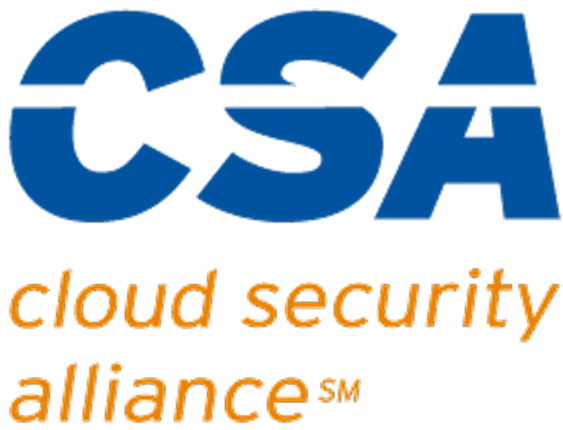Introduction
Few things in the computing world are more stressful than when you forget your login or password. This can happen to anyone, no matter how experienced they are with online systems, and it always seems to happen just when you urgently need access to your account. If you forget your password for your email, bank, social media account, or login for your computer, the consequences can be substantial. You may not be able to access your account or services, which can be frustrating and time-consuming. If you’ve forgotten your password or lost your login information for your online account, you can do a few things to get back into your account.
How common is it to forget a password?
Almost everyone has forgotten a password at some point in their lives. For many, this is a minor inconvenience that can be remedied by simply using one of the available password recovery techniques. However, it can be more severe for others, leading to loss of access to critical information or even identity theft. A study published in the journal Cyberpsychology, Behavior, and Social Networking found that approximately one-in-ten people have lost access to essential online services due to forgotten credentials. It is not uncommon to forget a password, but many people don’t know how to proceed when it happens to them.
What to do if you forget your password
Nearly every system that uses login credentials will provide some means of recovering or resetting your password and a way of recovering your username if you’ve lost or forgotten that. Most systems offer instructions on resetting your password or username and will typically provide a link to the automated recovery option(s) on the login page. However, if you can’t find this information, get in touch with the system provider using the email address, web form, or phone number for website support that is provided on their website.
An important note about cybersecurity
Never use a third-party website, tool, phone number, or email address when inquiring about access to your online account! Be sure to get any contact information from the website where you normally log in, NOT from a third-party blog or user forum. Never give out any of your personal information to anyone who contacts you about access to your account. Unscrupulous actors have peppered user forums with links and phone numbers that purport to provide support for various major online services, such as email, banks, software, and more. At best, these are third-party services that may be able to help you but will charge you a fee for their assistance. At worst (and probably more likely), they will query you for sensitive information such as your social security number, bank account number, credit card number, and the like, under the guise of using this information to help you regain access to your account, but in reality, they will use the information to steal your money and possibly your identity. Just don’t do it.
Here are some of the most commonly used methods to regain access to your account:
The “forgot your password” link
This is the most common option for password recovery, supported by nearly every online service. Visit the login page and click the “forgot password” link, usually located directly under the space where you’d typically enter your password. This will take you to a page where you can enter the email address associated with your account. Some systems will also have you enter your account username if it’s different than your email address. Once you’ve filled out these fields, click the “submit” button. An email will be sent to that address containing either a temporary password or a link to reset your password. Either way, you’ll set a new “permanent” password for your account as the next step. Once that is done, you should be able to log in.
Multi-factor authentication
If the service supports two-factor/multi-factor authentication, and you had previously enabled that feature for your account, the “forgot password” link may have you input a code from SMS (text) or an authentication app on your phone, rather than (or in addition to) entering your username and email address. If you can recover your password this way, please note that the SMS/authentication app will only send a one-time account recovery code; it is not possible to use the same code multiple times or recover multiple accounts with one code. Once you’ve completed the MFA challenge, you’ll be able to set a new password for your account.
Recovery “challenge” questions
Some online services use security or “challenge” questions that can be used to recover your password. These questions were selected by you when you set up your account and have answers that strangers are not likely to know, such as the name of your first pet or the city where you met your spouse. If your service supports this, choose this option when asked how you’d like to recover your password. Note that challenge questions are considered weak security by themselves, as others might know the make of your first car or the city you were born in. Because of this, you’ll typically have to complete one or two other steps, such as MFA or clicking an emailed link, in addition to answering the challenge question.
Phone number verification
Most of your online accounts have one or more phone numbers on file for you as part of your account profile. In some cases, the service provider may offer you the option of receiving a text message or an automated phone call to one of your phone numbers to verify your identity and recover access to your account. As with MFA, you’ll get a code via phone verification, which you’ll type into a box on the screen. Since this is not a high-security means of confirming identity, you may still be asked to answer a challenge question or receive an email as a further step to verify that you are the account holder.
Talk to a human
If all else fails, you can call the customer support line and speak to an agent, assuming that the service provider offers live support. Do not rely on any third-party listings or links – get the phone number for customer service directly from the provider’s website. If there’s no support phone number on the website, but live chat is available, you can try using that to initiate your request. If you are required to call in for assistance, the chat agent will provide you with a number to call. Once you get an agent on the line, they will ask you a series of questions to verify your identity. These may include challenge questions associated with your account, your physical address, a pin code or passphrase if you had set one, a recent transaction or balance if it’s a financial account, etc. If they can verify your identity, they will take you through the steps required to reset your password and regain access.
Recover or reset your Windows or Mac login
All of the recovery options listed so far have assumed that you’ve lost access to an online account, such as online banking, shopping, Gmail, etc. But what if you can’t log in to your Windows desktop due to a “password incorrect” error? If your Windows login has been lost or forgotten, there are just two options: attempt to recover your login or reset your Windows account. This article on the Microsoft Support site covers the details for several versions of Windows. It is strongly recommended that you review the article before you have a problem accessing your account, if at all possible. If your version of Windows supports security questions, set them up immediately. If you log into your desktop computer using a Microsoft.com account, you can reset the account password to regain access to your computer – here’s how to do it. And, need we repeat it: backup, backup backup! If you need to reset Windows to access your desktop, you’ll likely lose everything, so having that backup is crucially important!
Similar to Windows, macOS has limited options for recovering or resetting your password for your computer. The details are in this article, and as with Windows, set up any supported recovery options immediately so that you have a chance of regaining access without erasing everything.
Conclusion
A recent study found that over half of people have had trouble logging in to their accounts at least once in the past year. If you’ve found yourself in that situation and perhaps struggle to keep track of your passwords, you’re not alone. The good news is there are ways to avoid forgetting them in the future. Here are some tips to prevent the “incorrect password” message in the future:
- Use a secure means of managing passwords. This will make it easier for you to use them when needed and help prevent others from accessing your information. Check out our article about the ways to store and manage passwords for more details.
- Consider using a local or online password vault to create and store your passwords. This tool will generate and store random, complex passwords, and cloud-based versions enable you to use them across multiple browsers and platforms.
- Use different passwords for different websites and platforms. If one site is compromised, your other accounts won’t be affected.
- Set up security challenge questions, multi-factor authentication, phone-based verification, passphrases, and recovery keys wherever they are supported. These features are designed to authenticate your identity and can be crucial in regaining access to your account should you ever be locked out.
We hope that you found this guide to be helpful. Happy computing!




